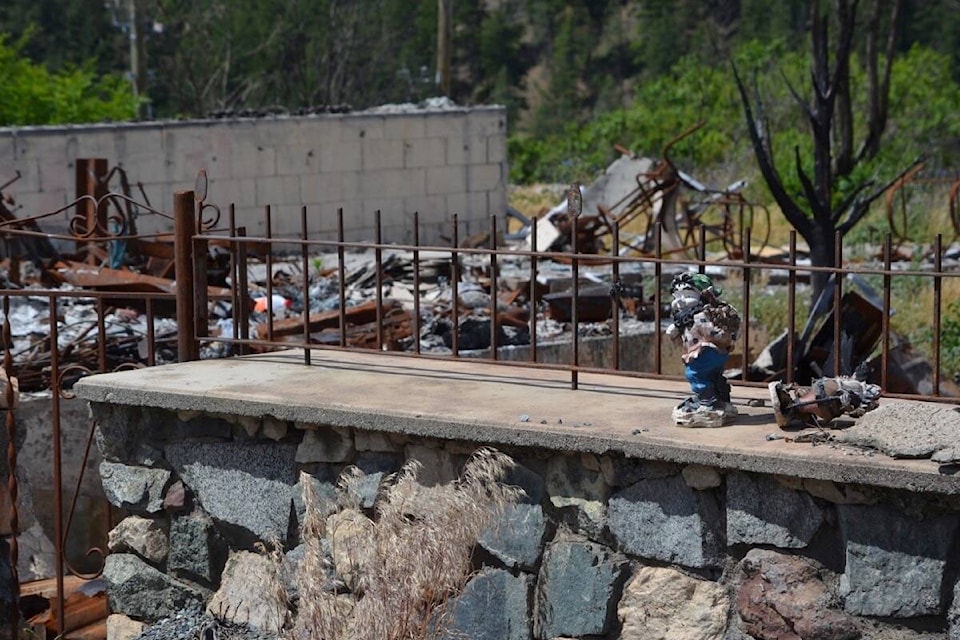Revisiting Lytton, a year after the fire that destroyed most of the town on June 30, 2021, is a sobering experience. Just as nothing could really prepare us for what we saw during a media tour on July 9, 2021 — despite the images that had gone round the world — nothing can prepare you for seeing, first-hand, how little has changed since then.
There are more weeds, and fewer burnt-out cars. The blue fencing all around downtown, and the signs, and the presence of heavy equipment, and workmen in full PPE makes it look, superficially, like any other construction site. It’s when you look more closely, for more than a few seconds, that you realize that while a few lots have been cleared, the vast majority have not. The museum and fire hall lots are clear, but the village office is not. The health centre has been taken down, but the gutted RCMP detachment remains.
Until fairly recently, people in the know were saying publicly that clearing would be finished, and rebuilding ready to start, by fall 2022. Now all but the most blithely optimistic have pushed the start of rebuilding back to spring 2023.
This is for the Village of Lytton, of course, which has soaked up the lion’s share of the attention. It’s understandable: almost an entire town burning down is a huge and devastating story. But people outside the village lost homes and property, and some have started to rebuild. Lytton First Nation has cleared its affected properties, installed dozens of units of temporary housing, and started building a new road to link the homes up with Highway 12.
It’s a stark contrast with the village, where progress has seemed glacially slow. On the one hand are residents who want nothing more than to get in there and start rebuilding, and have little patience with all the red tape and bureaucracy. In the not so distant past, after all, when something burned down you just went in as soon as the fire was out and the smoke had cleared and got on with it. Within a week of the Great Fire in Ashcroft in July 1916, business owners had already started rebuilding on their burnt-out lots.
On the other hand there are three levels of government — municipal, provincial, and federal — which can’t just ignore the very real health hazards and archaeological considerations and issue building permits willy-nilly. In 1916 no one had heard of a building permit, or zoning, or set-backs, or any of the myriad regulations that exist in 2022. Archaeological oversight? Hazardous materials? Bylaws? FireSmarting your property? What on Earth does any of that mean?
This isn’t to say there haven’t been mistakes and missteps and failures of communication along the way. From my vantage point, I’d apportion the lion’s share of the blame to the Province of B.C., which for a very long time seemed content to take a back seat. “We need to let the people tell us how they want to move forward,” the province cried, in various iterations, while at the same time overlooking the fact that “the people” — Village of Lytton council and staff, residents — had absolutely no idea how to deal with the aftermath of one of the biggest disasters in Canadian history, and needed more guidance from Victoria, which has that expertise on tap.
One of these days, when time has given more distance and the people involved in rebuilding Lytton are free to speak candidly, someone (not me, I hasten to add) will write a very interesting book about the Lytton fire: what led up to it, what caused it, and who did — and didn’t do — what in the aftermath. It will almost certainly be unflattering in many of its conclusions, but I hope it is also fair, noting that local government and residents never asked for what happened to them, had no tools to deal with it, and were left hanging out to dry by the very people who should have been there on Day One to help.
editorial@accjournal.ca
Like us on Facebook and follow us on Twitter
